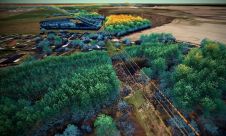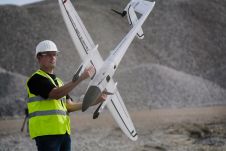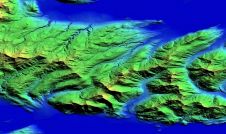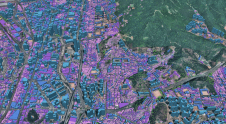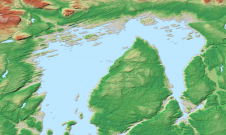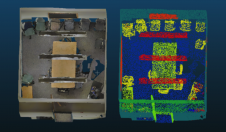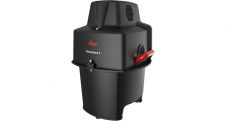A Next Event: CIPA 2017
邀请所有代表参加CIPA2017,即2017年第26届双年展研讨会,于2017年8月28日至9月1日在加拿大渥太华举行。CIPA2017将专注于用于保护的数字工作流程。
记录历史场所和景观的物理特征是预防性维护,监测和保护的基石。此类工作指南所产生的信息涉及业主,现场经理,公职人员和保护者的决策。严格的文档也可能有更广泛的目的:随着时间的流逝,它成为学者和公众逮捕此后发生彻底改变或消失的站点的主要手段。
With this in mind, CIPA was founded in 1968 jointly with ISPRS (International Society for Photogrammetry and Remote Sensing) to facilitate the transfer of technology from the measurement sciences into the heritage documentation and recording disciplines. CIPA’s mission is to encourage the development of principles and practices for the recording, documentation and information management for all aspects of cultural heritage; and to support and encourage the development of specialized tools and techniques in support of these activities.
The rapid rise in new digital technologies has revolutionized the practice of recording heritage places. Digital tools and media offer a myriad of new opportunities for collecting, analyzing and disseminating information about heritage sites. With new opportunities, there are also conflicts, and an intense effort to incorporate digital media into the education of conservation professionals. Issues regarding the proper, innovative and research-focused uses of digital media in heritage conservation are urgent topics in the global heritage conservation field, and CIPA and its partners have played a leading role in this area of cross-disciplinary research and practice. The symposium will offer a unique opportunity for educators, professionals, heritage institutions, and managers of heritage places to share, exchange, and explore new approaches, best practices, and research results in the area of these workflows.
Contributions in the form of papers and posters are invited for the following forums:
Identifying Heritage places for posterity and preparedness: this track will deal with issues concerning digital workflows for heritage inventories, documenting cultural landscapes, risk preparedness, conflict, and emergency recording.
- 数字化遗产位置:此轨道将重点关注用于捕获(或映射)历史结构的详细物理特征的技术(例如,使用机载和陆生3D扫描,摄影测量,移动传感器,无人机以及传感器和数据融合)。
- 辅助制造后代和保护的人工制品:该轨道将处理遗产场所的数字化和制造,以进行保护(例如3D打印,辅助制造,以及破坏的人工制品和遗址的重建)。
- 管理,价值和传播遗产信息:此轨道将处理高级信息系统的使用,例如构建信息建模(BIM),与BIM,实时模拟,地理信息系统(2D/3D GIS)耦合生命周期评估(2D/3D GIS)和增强现实应用。它还将处理遗产的沟通和意识,以及数字图书馆,虚拟博物馆,展览技术和严肃游戏等存储库。
- 监视,模拟和弹性:此轨道将处理建立模拟的问题,以评估使用计算机辅助方法的保护,康复和改造选项的影响。预防,维护和监测政策,用于评估遗产纪念碑和地点的非破坏性诊断工具和治疗方法,用于能量模拟的构建科学传感器以及结构性诊断将是该主题的主题。
- Rehabilitating heritage places: this track will focus on approaches to building condition assessments (building envelope, materials deterioration and structural integrity), designing monitoring strategies and the implementation of effective rehabilitation mitigation strategies for conservation. It will also look at marine heritage (eg. underwater archaeology, ships) and the cultural heritage of conflict and war (eg. documenting material remnants and the immaterial heritage at the time of war and recent conflicts).
- Special Sessions: this track will focus on important topics such as digitizing World Heritage Sites, teaching and learning, and intangible cultural heritage. It will also include international cooperation and large projects for heritage documentation and conservation.
The symposium will provide a platform for professionals, site managers and researchers to showcase their work and obtain feedback from knowledgeable symposium attendees.
有针对性的受众由参与遗产保护实践的专业人员(建筑师,工程师,景观建筑师,考古学家,保护者和)以及研究人员,教育工作者,历史学家,档案管理员,图书馆员,博物馆学家和学生。口头演示将限制为每个20分钟,并将解决数字工作流程的原因,何时,何时,何时,什么(按重要性的顺序)。论文可以解决建筑环境整个光谱的任何方面的保护。
Speaker’s and poster contributions should clearly provide:
- Why: the need(s) or issue(s) being addressed;
- Where or Context: the site or application background;
- What: the type of heritage resource being documented (eg. a historic building, an archaeological site, an artifact, etc);
- When: to which step in the heritage conservation process has the digital workflow been applied (eg. analysis, diagnosis, dissemination, therapy or control);
- 方法:已应用于解决“为什么”的数字工作流程;
- Effectiveness: the results and assessment of the approach; and Lessons learned.
将提供一个纸模板和示例。
Important dates:
- 1 December 2015 – 1st call for papers
- 1 March 2016 – 2nd call for papers
- 2016年6月1日 - 论文第三次电话
- 1 September 2016 – 4th call for papers
- 1 January 2017 – final call for papers
- 2017年2月1日 - 提交摘要的截止日期
- 2017年3月31日:摘要接受通知
- 30 April 2017: Deadline to upload full papers
- 15 May 2017: Notification of acceptance of reviewed papers
- 2017年6月15日:上传未审查论文和海报的截止日期
- 12 July 2017: Deadline for submission of corrected papers; deadline to upload non-reviewed papers and posters



